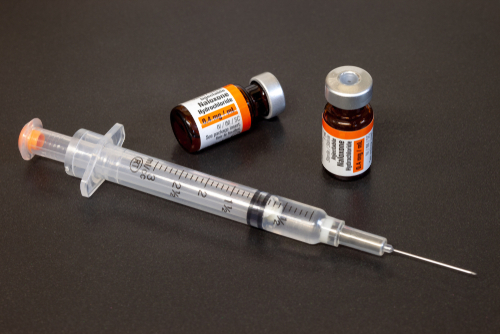
Members of the Indian Health Service, the Federal Health Program for American Indians, and Alaska Natives are working with members of their communities to reduce overdose deaths by improving access to Naloxone.
Commander Robert Boyle, a clinical pharmacist at the Salt River Integrated Health Care, said workers at that clinic are working with the Salt River Pima-Maricopa Indian Community to train them to use naloxone kits to reverse the effects of opioid overdoses.
In a memo, Boyle said that clinic workers trained hundreds of men, women, and children in the community on how to use the opioid overdose-reversing drug.
“In January 2020, the community’s StrongLife Wellness Program held a health screening and education event which included an intranasal naloxone training session. Clinic staff successfully trained more than 450 adults and children on the proper use of naloxone and dispensed over 280 free intranasal naloxone Kits,” he said. “A brief video on how to use intranasal naloxone was shown, and participants were encouraged to open their naloxone Kit and become familiar with the device as the video proceeded. Following the video, the trainers provided an in-person naloxone demonstration, answered questions, and quizzed participants on what they learned. This informal quiz session allowed participants to “teach-back” key principles of appropriate naloxone use.”
Salt River Integrated Health Care is also working with community members to promote appropriate and effective pain management and improve access to culturally appropriate treatment.
Working with tribal leadership, IHS has helped increase the community’s access to naloxone through several measures, including making naloxone co-prescribing mandatory for all opioid recipients since 2016; engaging the tribal council with formal naloxone use demonstrations; engaging the community with activities like seminars, workshops and health fairs; and spearheading the local “Not One More” campaign with provides education and training on naloxone to community members.




